Exploring the Rarest Crystals Found on Earth
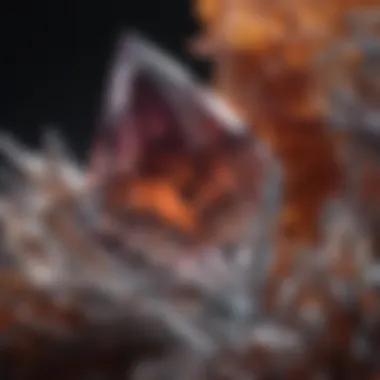
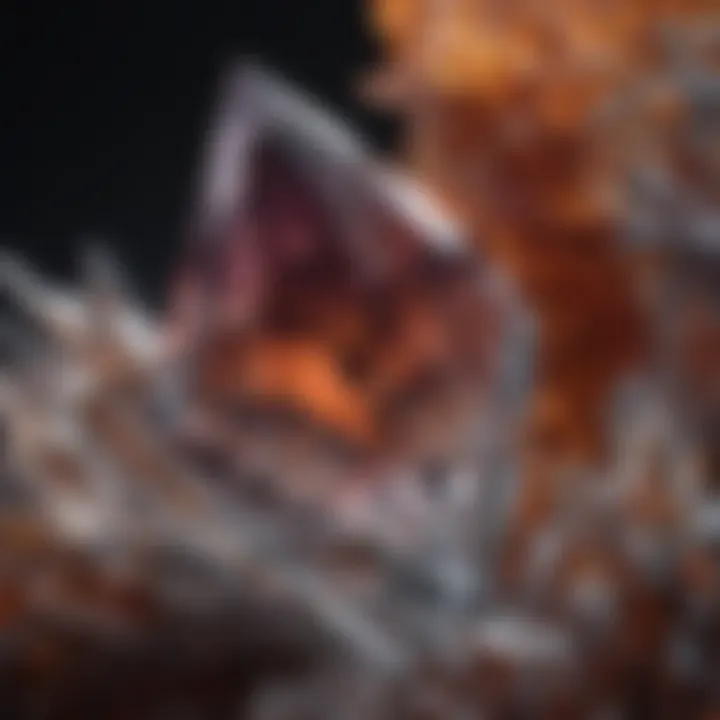
Intro
Crystals have fascinated mankind for centuries, serving not only as adornments but also as objects of curiosity in scientific and spiritual realms. Within this grand tapestry of geological wonders, some crystals stand out for their remarkable rarity. Enveloped in myths and often tied to various cultures, these exquisite specimens beckon gemstone enthusiasts, collectors, and jewelry designers alike. Understanding the fabric of these rare crystals requires a deep dive into their origins, properties, and cultural significance.
In this exploration, we will touch upon crystals that are not seen daily, yet carry stories worth telling. From the mystical depths of the Earth's crust to the hands of artisans, these gems reflect the dance between nature's artistry and human desire. Let’s embark on this intriguing journey.
Gemstone Overview
Definition and Origins
Crystals are naturally occurring solid substances whose atoms are arranged in an orderly repeating pattern. They form through a variety of processes, such as cooling magma or precipitation from solutions. While many crystals are easily found in nature, others are elusive, making collectors salivate with anticipation.
Take, for example, the Painite, once dubbed the rarest mineral on Earth. Initially discovered in Myanmar, it wasn’t until the 2000s that more specimens emerged, making researchers and gem lovers chase after its tantalizing beauty. Its very essence contradicts its name, presenting an irony that embodies the enchanting world of crystals.
Historical Significance
Throughout history, certain crystals have held profound significance. The Alexandrite, for instance, enchanted the Russian czars; its color-changing ability from green in daylight to red under incandescent light was considered magical. Even today, collectors treasure its rarity, encapsulating the allure of gemstones that connect us to different eras.
Another notable example is Benitoite, a gemstone that was discovered in California in the late 1900s. Known for its blue color and unique structure, it became the state gem, showcasing its cultural importance not just as a mineral but as a piece of local identity.
"Crystals are not just rocks; they are nature's art, shaped by time and environment, each having its unique tale to tell."
Gemstone Properties
Hardness and Durability
The hardness of a crystal is measured on the Mohs scale, which ranges from 1 (talc) to 10 (diamond). Rare crystals often exhibit varying degrees of hardness, making some more desirable for jewelry and others better suited for display. For instance, Jeremejevite, a rare aluminum borate mineral, ranks at a 5.5 to 7 on the scale, making it beautiful yet somewhat fragile, requiring careful handling.
Color and Clarity
The visual appeal of a gemstone is heavily influenced by its color and clarity. Rarity often correlates with unique colors. Grandidierite, a deep blue-green mineral from Madagascar, is a top example. Its striking hue, alongside its translucent quality, attracts both gemologists and collectors alike. Each rare crystal carries its own signature, a reflection of the conditions under which it was formed.
In summation, the world of rare crystals offers an enticing glimpse into Earth's underpinnings. Their unique properties, intertwined with historical narratives, create an alluring blend that captivates those who seek to understand these magnificent treasures.
Intro to Rare Crystals
The world of rare crystals offers a glimpse into the wonders of nature's artistry. These unique formations capture the imagination and curiosity of gemstone enthusiasts, collectors, and even jewelry designers. But what makes a crystal truly rare? It's about understanding the intricate balance of geological conditions, environmental influences, and sheer luck that leads to the formation of these stunning minerals. This section will unpack the significance of rare crystals, delving into their unmatched beauty and value.
Rarity in the context of crystals goes beyond merely counting how many exist. It's tied to their origin, growth conditions, and the specific elements that contribute to their composition. Rare crystals often shine a light on the story of Earth's geological activity and its history. With that said, recognizing these gems is crucial for appreciating not just their aesthetic allure but also their scientific and cultural significance.
When it comes to enthusiasts and collectors, the appeal is multifaceted. For some, a rare crystal is akin to owning a piece of natural history; for others, it’s about the investment potential or unique aesthetic that a particular gem brings to the table. In addition, rare crystals often bear symbols and meanings that resonate deeply with people, further enhancing their desirability.
"Every rare crystal has a narrative; it's a snapshot of nature's artistry shaped over countless years."
In summary, the exploration of rare crystals opens a window to understanding our planet’s geological marvels. This discussion will pave the way to delving deeper into the various factors that contribute to the rarity of these gems. Knowing that rarity isn't just a number but a tapestry woven from history, environment, and human interest will enrich our understanding as we journey through the world of rare crystals.
Understanding the Concept of Rarity
To grasp how rarity manifests in crystals, one must consider several factors. Geological processes lay the groundwork for a mineral's existence. Over millennia, conditions such as temperature, pressure, and chemical environment can lead to the crystallization of minerals. Conditions that foster these processes are often scarce in nature, contributing to the rarity of the resultant crystals.
Then, there's environmental influence. Some crystals, like benitoite, form in very specific regions under particular circumstances, making their emergence a rare event. Minimal changes in the surrounding environment—be it the chemical makeup of the earth where they grow or climatic factors—can create a scenario where crystals either flourish or fail to form altogether.
In addition, the cultural lens through which rarity is viewed plays its part. Certain communities might attach spiritual or historical significance to specific crystals, thereby enhancing their perceived value beyond mere aesthetics. For enthusiasts, a rare gem can symbolize not just beauty but also personal connections or stories.
By understanding what contributes to the rarity of crystals, we can appreciate the intricate dance between nature and chance that results in some of the most beautiful gemstones on Earth.
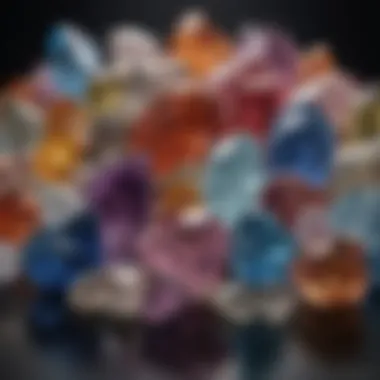
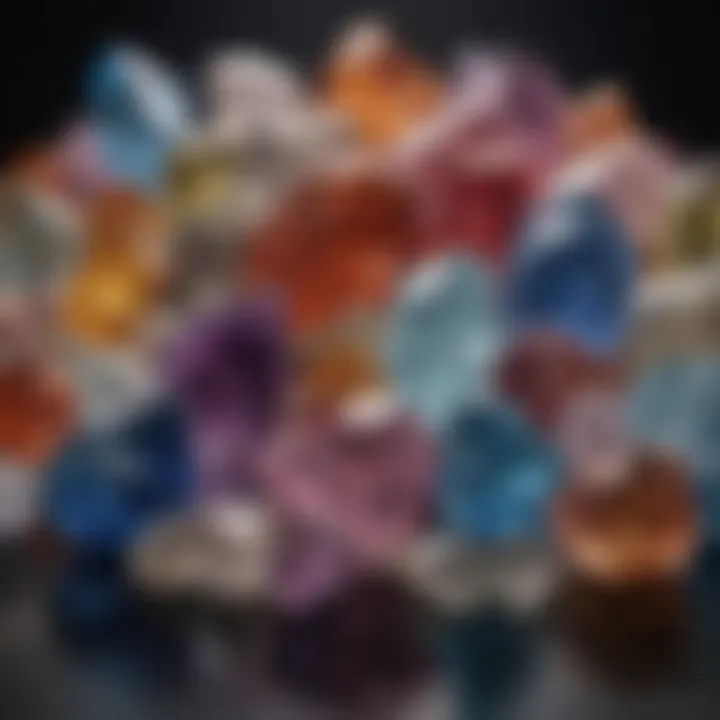
Formation of Rare Crystals
When one delves into the topic of rare crystals, the formation of these stunning specimens stands as a cornerstone for understanding their value and characteristics. The rarity of these crystals is not merely a consequence of chance; rather, it is the result of intricate geological processes and environmental conditions that occur over extensive periods of time. Recognizing these factors not only informs gemstone enthusiasts but also enriches their appreciation of these natural wonders.
Geological Processes Contributing to Rarity
The earth's crust is like a treasure map, dotted with the elements and conditions that give rise to the formation of rare crystals. Specific geological processes are the underlying forces that account for a crystal's scarcity. Take pressure and temperature fluctuations, for instance. Crystals typically form under specific sequences of these parameters. During metamorphic processes, existing rocks are subjected to intense pressure and temperature, creating conditions perfect for rare crystal development.
Moreover, the role of hydrothermal activities can’t be overstated. Superheated water, rich in minerals, can seep through rocks, precipitating crystals in veins or cavities. Mineral saturation becomes the name of the game here.
The list of geological processes contributing to crystal rarity includes:
- Igneous Activity: Formation during volcanic eruptions can produce unique specimens like benitoite.
- Sedimentary Action: Evaporation can lead to salt formations, which sometimes yields rare gemstones.
- Regional Metamorphism: Pressure builds over ages, leading to the transformation of minerals into rarer forms.
Each of these processes plays a symbiotic role in the ultimate creation of rare crystals, weaving a complex tale of transformation that makes them so desirable.
Environmental Factors Influencing Crystal Growth
In tandem with geological processes, environmental conditions are just as vital in shaping crystal formations. Temperature, more so than in other natural phenomena, acts almost like a sculptor, guiding crystals as they emerge. Cooler environments can foster slow-growing, larger crystals, while a rapid cooling process might lead to smaller, more complex formations.
Likewise, the availability of specific nutrients—the very building blocks of crystals—can vary significantly based on geographical locations. For instance, the accessibility of alkaline solutions can contribute to the formation of alexandrite under specific ecological conditions.
Key environmental factors include:
- Humidity Levels: High humidity can accelerate mineralization but can also introduce complications that slow down growth.
- Soil Composition: Variances in soil can lend to the formation of unique characteristics in crystals, affecting both aesthetics and rarity.
- Tectonic Activity: Earthquakes or shifts can unearth new locations where crystals can grow, expanding the geological palette.
It's worth noting that while these environmental factors contribute to the rare beauty of these crystals, they also preserve a delicate balance. Any disruptions in their natural ecosystems can potentially disrupt the formation processes, which is why understanding these elements is imperative for both collectors and environmentalists.
Notable Rare Crystals
In the grand tapestry of gemstones, notable rare crystals occupy a unique space. Their rarity is not merely a matter of limited availability; it encompasses geological processes, historical significance, and aesthetic value. These crystals serve as mesmerizing examples of nature's ingenuity and the intricate conditions required for their formation. Understanding notable rare crystals is essential for gemstone enthusiasts as it opens new avenues for appreciation, investment, and the ethical implications of their sourcing. By exploring them, collectors and admirers alike can develop a richer understanding of the balance between natural beauty and rarity in the realm of geology.
Painite: The Ultimate Rarity
Painite stands as a testament to the extraordinary, having once held the Guinness World Record for the rarest mineral on Earth. First discovered in Myanmar in the 1950s, this gemstone attracted attention initially due to its striking brownish hues tinged with shades of red and orange. Painite is comprised of calcium, zirconium, and boron, making it an intriguing fusion of elements. Its true rarity lies in the fact that, for decades, only a few dozens of specimens were known to exist. Even today, finding a painite gemstone is akin to stumbling upon a needle in a haystack.
"The rarity of Painite speaks volumes about nature's hidden wonders, a marvel seldom seen by the human eye."
Often, the value of Painite is determined by its color intensity and clarity, making it a treasure for both collectors and investors alike.
Red Beryl: A Fiery Gem
Red Beryl, also known as Bixbite, is another prime example of nature's exclusivity. While beryl is relatively common in its other forms—emeralds and aquamarines—Red Beryl is exceedingly rare, found primarily in Utah. Its crimson color often draws comparisons to high-end rubies, but Red Beryl possesses a special glow that sets it apart. The vivid red hue is due to traces of manganese, which is essential for its coloration.
The scarcity of Red Beryl, along with its captivating aesthetics, elevates its status significantly in the world of collectors. The demand for this gemstone remains high, making it a viable investment piece. Just a handful of locations in the world produce this gem, further enhancing its appeal.
Musgravite: The Precious Stone
Musgravite is the quiet contender in the race for rarity. This stone was first identified in Australia, yet it has also been found in locations like Greenland and Madagascar. Composed of beryllium, aluminum, and oxygen, Musgravite’s allure comes from its grayish-green to violet tones, which can shift in hue under different lighting. Though muscle and strength characterize this gem, its delicate appearance creates a juxtaposition that captivates gem lovers.
Musgravite's rarity is not just a function of its composition but also its geological formation processes. With only a limited number of specimens discovered, collectors consider it a prized possession. Its market value reflects this, often reaching astronomical prices at auctions and among private collectors.
Benitoite: California’s State Gem
Discovered in the early 1900s in California's San Benito County, Benitoite is notable not just for its rarity but also for its vibrant blue color which can rival that of sapphire. Unique for being the official state gem of California, its distinctly striking color results from the presence of titanium within its structure. An interesting trait of Benitoite is its fluorescence; under ultraviolet light, it glows a brilliant blue, enhancing its aesthetic appeal.
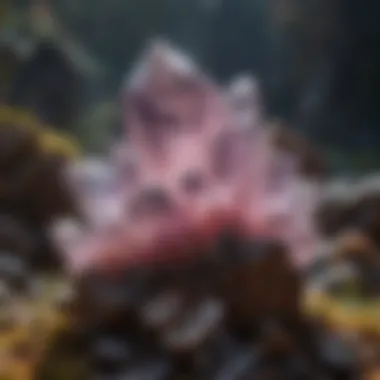
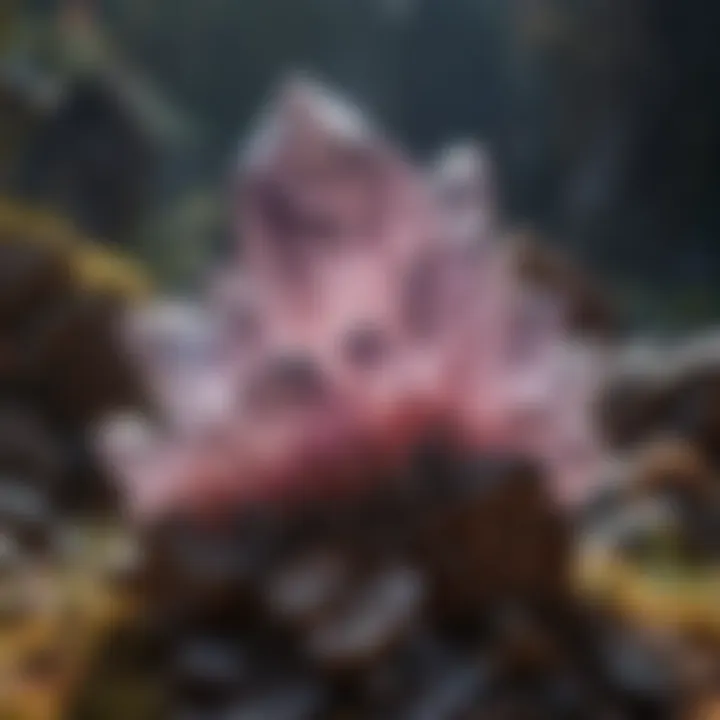
This gem is primarily sourced from the Benitoite Gem Mine, where production has significantly declined over the decades. As a result, Benitoite has become a coveted item for gem collectors, often fetching impressive prices in the market.
Alexandrite: The Chameleon Gemstone
Alexandrite is perhaps the most dynamic of rarities in the mineral kingdom. This remarkable gemstone has the unique ability to change color depending on the light, showcasing a green hue in daylight and a deep red under incandescent light. First discovered in the Ural Mountains of Russia, Alexandrite is an extraordinary variety of chrysoberyl, gaining fame for its dazzling optical effects.
The stone's rarity is compounded by the limited locations from which higher quality stones can be sourced. Although synthetic versions exist, the natural Alexandrite remains highly sought after due to its spectral phenomena and gemstone heritage. For buyers, investing in Alexandrite can be advantageous, as collectors often seek out this unique stone for its beauty and distinctive qualities.
In summary, these notable rare crystals embody not only the beauty of nature but also serve as potent symbols of the Earth’s storied geological history. Their evolving market value, due to demand and rarity, reflects the intricate balance between human desire and the Earth's resources. Each crystal tells a story, a chapter of time captured in its facets, making their exploration a journey worth taking.
Cultural Significance of Rare Crystals
Rare crystals are more than just stunning visual spectacles; they serve as a bridge between our material and spiritual worlds. A closer look reveals that each crystal carries not only its unique aesthetic but also a rich tapestry of cultural stories, beliefs, and symbols. This section dives into the heart of why these minerals matter so profoundly to various societies across the globe.
Historical Context and Symbolism
From ancient civilizations to modern days, rare crystals have held significance that transcends mere decoration. The Egyptians, for instance, placed immense value on lapis lazuli, believing it represented the heavens. They adorned their pharaohs with this deep blue stone, using it as a symbol of power and immortality.
In many cultures, crystals have symbolized protection and healing. For example, jade was revered in Chinese tradition, often associated with purity and moral integrity. When passed down through generations, these rare stones became family heirlooms, laden with ancestral significance. It’s not just about the physical beauty; it's the stories and meanings attached to these gems that resonate through time.
Additionally, various cultures imbue crystals with specific powers or characteristics. Amethyst, a crystal known for its calming properties, was believed by the ancient Greeks to guard against intoxication. This notion ties into how crystals have historically understated deeper behavioral and emotional states, underpinning the connection that people feel with these natural wonders.
"Crystals are the Earth’s purest form of energy; they are not just pieces of stone, but slices of history and emotion intertwined with life’s essence."
Spiritual and Metaphysical Beliefs
The allure of rare crystals extends into the realm of spirituality and mysticism. Many believe that these minerals vibrate at frequencies that can influence the human experience, contributing to emotional, physical, and spiritual well-being. Crystals like clear quartz are often referred to as the "master healer" in metaphysical traditions, thought to amplify energy and thought, as well as the effect of other crystals.
In current holistic practices, crystals often play integral roles in activities like meditation and chakra balancing. Different crystals are associated with various energy centers in the body; for example, rose quartz is linked to the heart chakra, inviting love and compassion. The ritualistic use of these stones showcases their deeper connection to one’s inner self and the universe, suggesting that they can serve as conduits of energy or spiritual insight.
Such beliefs encourage not just personal connection, but community camaraderie as well. Whether in rituals, ceremonies, or even casual gatherings, the sharing of crystals can foster a sense of unity among participants who are exploring their spiritual paths together.
Market Demand and Economic Value
In the world of gemstones, the concept of market demand and economic value is as complex as a well-crafted piece of jewelry itself. It's more than just the price tag on a rare crystal; it encapsulates the cultural importance, the uniqueness of the stone, and the intricate web of factors influencing its worth. Understanding the dynamics of market demand not only sheds light on the rarity of these gemstones but also reveals the stories behind them, making it a significant area of exploration for enthusiasts and collectors alike.
Factors Influencing Market Prices
Prices of rare crystals can resemble a rollercoaster ride, constantly swaying with various influences. Here are some key factors that can push prices up or down:
- Rarity: The most obvious influencer is how scarce the crystal is. A gem like Painite, once dubbed the rarest mineral on Earth, often commands extraordinarily high prices due to its extreme rarity.
- Quality: Not all rare crystals are created equal. Clarity, color, and cut can drastically alter value. For instance, a high-quality Benitoite with a striking blue hue can be worth much more than a lower-grade counterpart.
- Market Trends: Much like fashion, the gemstone industry can have trends that dictate demand. For example, the resurgence of interest in vintage and unique stones can suddenly increase the price of particular crystals.
- Cultural Significance: The lore and historical importance attached to a crystal can elevate its status and price. Alexandrite, with its unique color-changing property, has long been associated with beauty and wealth, thus benefitting from its glamorous reputation.
- Market Conditions: Global economic conditions can greatly impact prices. During a recession, luxury items like rare crystals might see a dip in prices, while a booming economy can cause prices to skyrocket due to higher disposable incomes.
"The further you delve into the world of rare crystals, the more you realize that their value lies not just in their beauty, but in their narrative—each crystal tells a unique story."
Collector Trends and Investment Potential
The landscape of collectors and investors in rare crystals is ever-evolving. Many enthusiasts see rare crystals not just as collectibles but as viable investment opportunities. To understand this, it's vital to consider some current trends:
- Emerging Markets: As more people become aware of the beauty and financial potential of rare crystals, new markets are opening up internationally. Countries like China and India have seen a swell in demand, resulting in increased prices.
- Sustainable Choices: There's a growing movement among collectors to source crystals ethically. This focus on sustainability not only appeals to environmentally conscious buyers but also often leads to higher prices for ethically sourced stones.
- Digital Platforms: The rise of online auctions and marketplaces has made it easier than ever to buy and sell rare crystals. Platforms like Reddit and dedicated gemstone forums provide venues for collectors to connect, share, and trade.
- Emphasis on Provenance: Modern collectors are increasingly interested in the stories behind their stones—who owned them, where they come from, and how they were mined. Provenance can significantly enhance a crystal's desirability and value.
Investing in rare crystals can be both exciting and lucrative. However, it also necessitates thorough research and an understanding of market trends. The fusion of passion and economics has made collecting rare crystals a fascinating parallel career for many enthusiasts.
Ethical Considerations in Crystal Sourcing
The debate about ethics in crystal sourcing is gaining momentum, becoming a focal point for gemstone enthusiasts and collectors alike. As these rare crystals grow in popularity, understanding the ramifications of how they are procured becomes exceedingly important. The allure of rare gems often overshadows the environmental and social implications of their extraction. Thus, an examination of ethical considerations is vital for a responsible relationship with our natural resources.
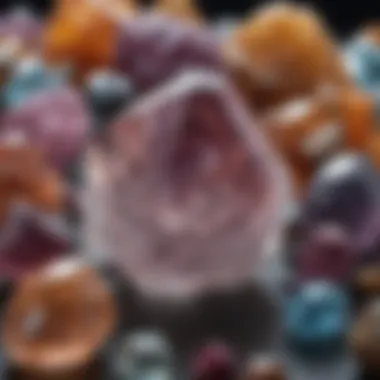
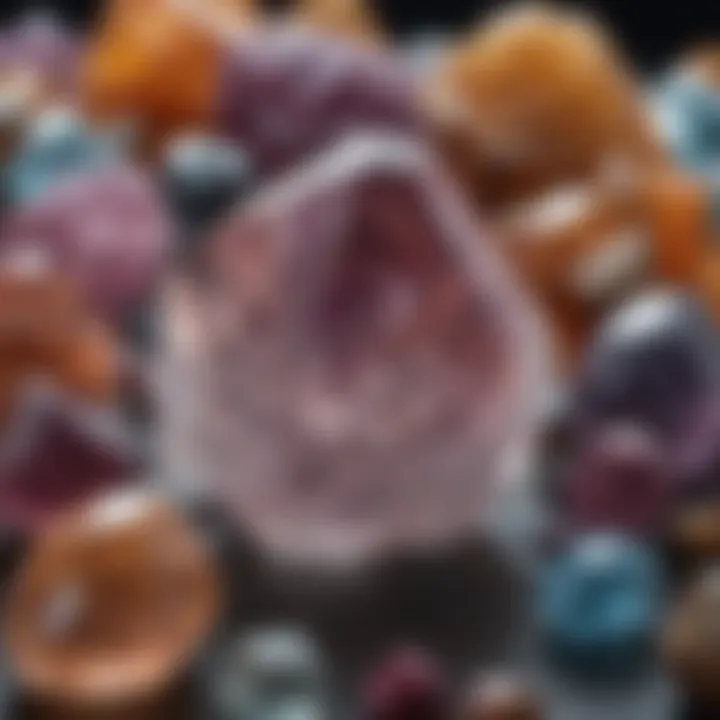
Environmental Impact of Mining Rare Crystals
Mining activities, regardless of their scale, invariably leave a mark on the landscape. The extraction of rare crystals can lead to habitat destruction, soil erosion, and water pollution, which are often overlooked in the rush to obtain these dazzling gems. For instance, large-scale mining operations use significant amounts of water and energy, releasing harmful chemicals into the environment. This not only affects the immediate ecosystem but can also have long-term repercussions on local wildlife and plant life.
The environmental cost can be steep, prompting numerous organizations to advocate for more sustainable mining practices. Implementing measures that lower the ecological footprint of mining is crucial. Here are specific points to consider:
- Responsible Sourcing: Opt for crystals that are sourced from mines following strict environmental guidelines, helping to ensure minimal damage to nature.
- Reclamation Practices: Encourage companies to engage in land reclamation, restoring areas post-extraction to their natural state, which is not merely a wish but an obligation.
- Community Impact: Mining operations should engage and support local communities, providing jobs and fostering local economies without sacrificing ecological integrity.
- Transparency: Ensure there is transparency in the supply chain, allowing consumers to understand the origin of their crystals and the methods used in mining.
"We must not only cherish the beauty of rare crystals; we should also respect the earth that yields them."
In a world increasingly aware of sustainability, gemstone enthusiasts and collectors play a pivotal role. By choosing ethically-sourced crystals, they can help drive demand for practices that prioritize environmental health and social responsibility. This conscious consumerism may be the catalyst needed for the industry to adopt more sustainable approaches.
Ultimately, understanding the implications of crystal sourcing can deepen the appreciation for these natural wonders, ensuring they are preserved for generations to come. The beauty of rare crystals should not come at the expense of the very world they originate from.
Care and Maintenance of Rare Crystals
Taking care of rare crystals is not merely a choice; it’s a responsibility. As every stone holds its beauty and uniqueness, understanding how to maintain them becomes crucial for any collector or enthusiast. Proper care not only preserves their physical integrity but also ensures they retain their aesthetic charm and, in some cases, value. When we’re talking about rare materials, neglect can lead to irreversible damage—like a priceless painting left out in the rain.
Best Practices for Preservation
When it comes to preserving rare crystals, following best practices can make all the difference. Here are some fundamental tips that every collector should keep in mind:
- Storage: Always store crystals in a temperature-controlled environment. Extremes in heat and cold can compromise their structure. A dehumidified space helps too, as moisture can lead to unwanted growth or alterations in surface texture.
- Cleaning Methods: Use a soft, dry cloth for routine cleaning to avoid scratching the surface. For deeper cleans, warm soapy water is your best bet. Always steer clear of harsh chemicals and ultrasonic cleaners—those might just do more harm than good.
- Handling: When showing off your precious crystals, handle them with care. Oils from your skin can create a film that dulls their shine over time. Wearing gloves can help avoid this, especially with more delicate specimens.
- Exposure to Light: Some rare crystals, like amethyst, can fade if exposed to prolonged sunlight. Store them in darker spaces or cases lined with fabric to protect their colors from washing out.
- Regular Checks: Make it a habit to regularly inspect your collection. Look for any signs of cracks, chips, or other damages, and take quick action if you find anything amiss. Taking pictures periodically can help you track changes over time.
- Professional Help: If you’re dealing with particularly valuable pieces, consider consulting a professional conservator for guidance on restoration or preservation techniques.
"Proper care transforms your rare crystals from mere objects into lasting legacies"
Keeping in mind these practices can not only prolong the life of your rare crystals but also maintain their allure. Like caring for a bonsai tree, patience and diligence will lead to exceptional results over time. After all, collectors are not just custodians of beauty; they are also stewards of history and geology.
Future of Rare Crystals
The world of rare crystals is not just a fleeting fascination but a growing field rich with potential. As we touch on the future of these exquisite gems, it’s crucial to recognize their significance in various industries, especially in technology and science. Rare crystals often embody unique properties that are not only beautiful but also functional, making them a topic of increasing relevance.
The integration of rare crystals into advanced technologies is particularly captivating. For example, lithium tantalate, a rare mineral used in the production of piezoelectric devices, shows promise for enhancing everything from sensors to telecommunications. As demand for faster, more efficient technology rises, so does the interest in sourcing these materials responsibly.
Moreover, the scientific community is increasingly focused on the potential applications of rare crystals in emerging fields such as quantum computing and renewable energy. The piezoelectric properties of certain crystals can be harnessed to create new forms of energy or improve computational efficiency.
Prospects in Technology and Science
The intersection of crystals and technology has opened several avenues worth exploring.
- Medical Applications: Certain rare crystals are being studied for their uses in medicine. For instance, barium titanate is a crystal that has found its way into the development of ultrasound transducers, enhancing imaging techniques that are critical in healthcare.
- Electronic Advances: The demand for materials in the electronics sector has led to a significant focus on rare crystals. The unique conductive properties of materials like praseodymium can lead to innovations in solid-state devices, possibly minimizing energy loss and maximizing performance.
- Energy Efficiency: Renewable energy technologies, such as solar panels and battery technology, are also seeking new input from rare crystal compositions. Innovations like solar cells made from perovskite crystals show promise in creating more effective energy solutions.
The prospects are not without their challenges, however. Ethical sourcing of these precious materials remains a hurdle. Ensuring that the extraction processes do not harm the environment or local communities is paramount. As awareness grows, so does the push for more sustainable mining practices.
"As we strive to uncover the secrets of these rare gems, the eternal quest for knowledge drives us to find innovative uses while respecting the balance of our planet."
Understanding the future of rare crystals necessitates a nuanced approach that balances the excitement of technological advancement with ethical considerations. Collectors and enthusiasts can expect to see a more integrated role of crystals in everyday technology, potentially transforming how we interact with the digital world.
Culmination
The conclusion serves as the final space we reflect on our journey through the world of rare crystals. It’s more than just a wrap-up; it’s a heartfelt nod to the intricate beauty and staggering diversity found in these remarkable formations. Throughout the article, we’ve traced the delicate balance between natural rarity and the traditional and modern significance these crystals hold. One cannot overlook the multifaceted role they play in our lives—both aesthetically and economically.
In this exploration, we’ve revealed how rarity in crystals isn’t only measured by their geological formation but also by the stories they carry. Each specimen, like Painite or Musgravite, exemplifies unique processes and conditions that must align just right for them to exist. This geological lottery not only increases their preciousness but also captivates collectors and enthusiasts alike.
Moreover, embracing the beauty in these crystals can foster a deeper appreciation for nature’s artistry. It opens paths for choosing ethically sourced gems as a way to ensure both the environment and communities involved in mining are respected and valued.
As we reflect on the themes interwoven in this article, consider how the appreciation for rarity extends beyond just the allure of gemstones. It encompasses respecting the environment and understanding our collective impact. By contemplating the beauty and value of rare crystals, we also ponder our connection to the Earth and the precious resources it offers.
"Rarity is the spice of life; it is what fuels the desirability of these extraordinary gems."
Ultimately, as we close our discussion, the essence of rare crystals lies in their stories. Every sparkle, hue, and facet unfolds history, culture, and human emotion, making them much more than mere collector's items. They are a testament to nature's hidden wonders and serve as a bridge between our world and the uncharted realms of Earth’s depths. Thus, this reflection unearths not just beauty, but also a call to stewardship and awareness as we engage with the remarkable world of absolutely rarest crystals.



